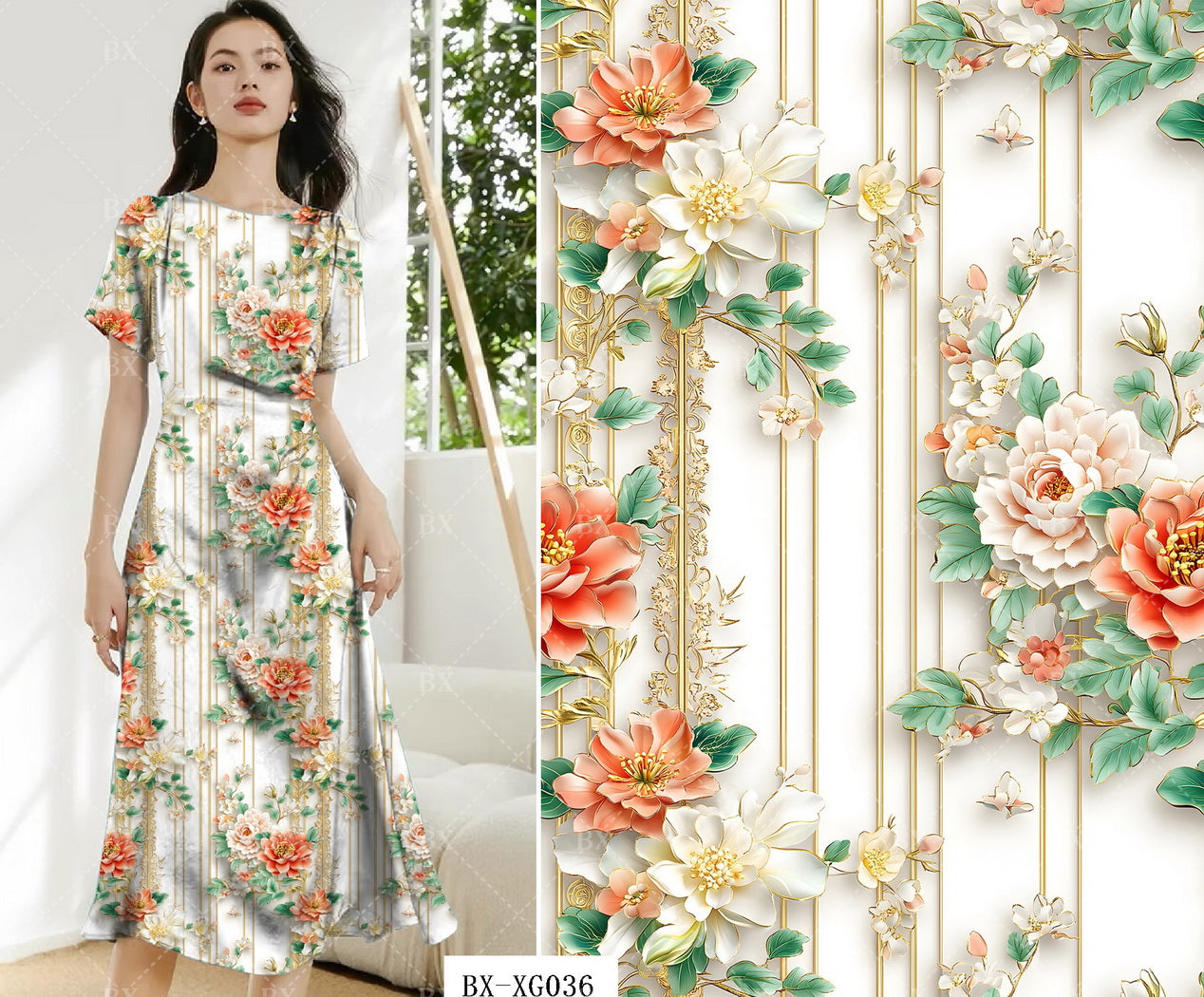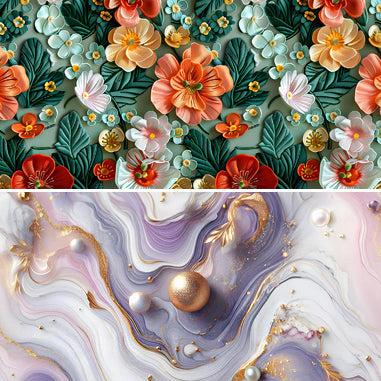How Digitally Printed Rayon Fabric is Transforming the Textile Industry
The textile industry is a dynamic landscape, constantly evolving with innovations in materials, techniques, and consumer demands. One of the most significant recent transformations has been the rise of digital printing on rayon fabric. This technology has not only revolutionized fabric design but also impacted production processes, sustainability efforts, and the overall market. This in-depth article explores how digitally printed rayon fabric is changing the textile industry, examining its benefits, applications, challenges, and future potential.

The Allure of Rayon: A Versatile and Sustainable Choice
Rayon, a semi-synthetic fiber derived from wood pulp, has long been a popular choice in the textile industry. Its versatility stems from its unique properties: it mimics the drape and feel of silk, the breathability of cotton, and can be easily blended with other fibers. Furthermore, rayon is a biodegradable fiber, making it a more sustainable option compared to purely synthetic materials. This eco-friendly aspect has become increasingly important in today's market, where consumers are more conscious of the environmental impact of their choices.
Digital Printing: A Paradigm Shift in Textile Design and Production
Digital printing technology has revolutionized the way fabrics are designed and produced. Unlike traditional printing methods, digital printing allows for intricate, high-resolution designs with an unlimited color palette. This has opened up a world of possibilities for designers, enabling them to create complex patterns, photorealistic images, and personalized designs with ease. Beyond design, digital printing offers several other advantages:
- Reduced Lead Times: Digital printing eliminates the need for screens or plates, significantly reducing setup time and allowing for faster turnaround times. This agility is crucial in today's fast-paced fashion industry, where trends change rapidly.
- On-Demand Production: Digital printing enables on-demand production, meaning that manufacturers can print only the exact quantity of fabric needed, minimizing waste and reducing inventory costs.
- Increased Design Flexibility: The ability to print complex designs and an unlimited number of colors without additional costs gives designers unparalleled creative freedom.
- Sustainable Practices: Digital printing often uses less water and energy compared to traditional methods, contributing to more sustainable textile production.
The Synergistic Combination: Digitally Printed Rayon Fabric
The combination of digital printing and rayon fabric has created a powerful synergy. The smooth surface and inherent properties of rayon make it an ideal canvas for digital printing, resulting in vibrant, crisp, and long-lasting prints. This combination has found applications in a wide range of textile products:
- Fashion Apparel: Digitally printed rayon is used to create stunning dresses, blouses, skirts, scarves, and other garments. The fabric's drape and printability make it perfect for both casual and formal wear.
- Home Textiles: Rayon's softness and breathability make it a popular choice for bedding, curtains, upholstery, and other home furnishings. Digital printing allows for personalized designs and vibrant colors, enhancing the aesthetic appeal of these products.
- Accessories: Scarves, shawls, and other accessories made from digitally printed rayon can add a touch of elegance and style to any outfit.
- Technical Textiles: While less common, digitally printed rayon is also being explored for niche applications in technical textiles, where its unique properties can be leveraged.
Benefits for Manufacturers and Consumers
The rise of digitally printed rayon fabric has brought numerous benefits to both manufacturers and consumers:
-
For Manufacturers:
- Increased efficiency and reduced costs through on-demand production and shorter lead times.
- Greater design flexibility and the ability to offer customized products.
- Access to a wider market due to the growing demand for sustainable and digitally printed textiles.
- Improved profit margins due to reduced waste and optimized production processes.
-
For Consumers:
- Access to a wider variety of unique and personalized designs.
- High-quality fabrics with vibrant, long-lasting prints.
- More sustainable and eco-friendly textile options.
- Faster access to trendy and fashionable garments.
Challenges and Considerations
While the advantages of digitally printed rayon are numerous, there are also some challenges and considerations to address:
- Cost of Technology: Investing in digital printing equipment can be expensive, particularly for smaller manufacturers.
- Technical Expertise: Operating and maintaining digital printing equipment requires specialized technical skills.
- Ink Costs: The cost of high-quality digital printing inks can be a significant factor in overall production costs.
- Fabric Pre-treatment: Rayon fabric often requires pre-treatment to ensure optimal print quality and colorfastness.
- Sustainability Concerns: While rayon is biodegradable, the production process can involve the use of chemicals. Sustainable sourcing of wood pulp and responsible manufacturing practices are crucial to minimize the environmental impact.
The Future of Digitally Printed Rayon Fabric
The future of digitally printed rayon fabric looks bright. Ongoing advancements in digital printing technology, including faster printing speeds, improved ink formulations, and more efficient pre-treatment processes, are expected to further enhance the benefits of this technology. Furthermore, increasing consumer demand for sustainable and personalized products is likely to drive further growth in the market for digitally printed rayon. Here are some key trends to watch:
- Increased Customization: The ability to create personalized designs will become even more important, with consumers seeking unique and bespoke products.
- Sustainable Innovations: Further research and development will focus on developing more sustainable rayon production processes and eco-friendly digital printing inks.
- Integration of Technology: Digital printing will be increasingly integrated with other technologies, such as 3D printing and artificial intelligence, to create even more innovative textile products.
- Expansion into New Markets: The use of digitally printed rayon is expected to expand into new markets and applications, including technical textiles and industrial uses.
Conclusion: A Transformative Force in Textiles
Digitally printed rayon fabric has emerged as a transformative force in the textile industry. Its unique combination of design flexibility, sustainable properties, and efficient production processes has revolutionized the way fabrics are designed, produced, and consumed. While challenges remain, the future of this technology is promising, with ongoing innovations and increasing consumer demand driving further growth and expansion. As the textile industry continues to evolve, digitally printed rayon fabric is poised to play a central role in shaping the future of fashion, home furnishings, and other textile applications. Manufacturers and designers who embrace this technology and address its challenges will be well-positioned to thrive in this dynamic and ever-changing landscape. The digital revolution in textiles is here, and digitally printed rayon fabric is leading the charge.





Leave a comment
This site is protected by hCaptcha and the hCaptcha Privacy Policy and Terms of Service apply.